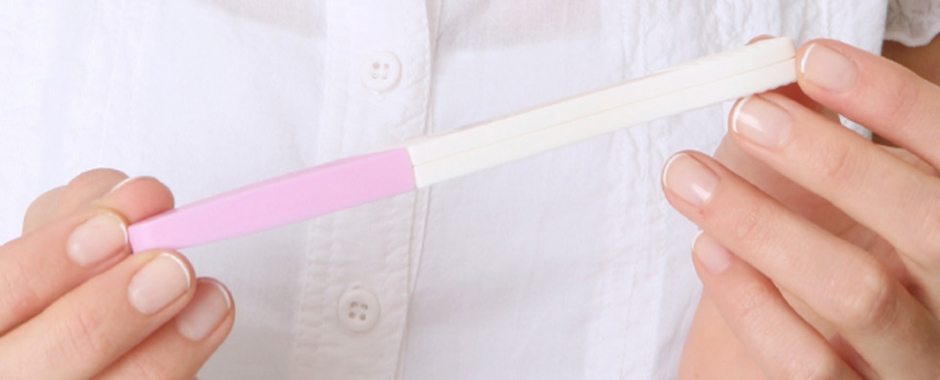Signs of Pregnancy

When your fertilised egg attaches itself to the wall of your uterus there is a significant change in the hormonal balance of your body and you might start to feel different. These changes could be the first signs that you are pregnant. Or you may not experience changes for weeks, with the first suggestion that you are pregnant being a missed period.
There are a number of different signs of early pregnancy. Some are presumptive, which means that they indicate that you might be pregnant; some are probable and others are absolutely positive.
Presumptive signs: 3-4 Weeks Pregnant
Breast Changes - Discomfort, tenderness or tingling and a feeling of fullness is sometimes noticed by women as early as the first week after conception, because the blood supply to your breast is increasing. This is a presumptive sign
Missed period – If you are sexually active and have had a regular menstrual cycle in the past, a missed period is a fairly reliable sign of pregnancy. However, other factors can contribute to a woman’s period showing up late. Stress and hormonal imbalance can affect the regularity of a woman’s cycle as can illness.
Nausea and Vomiting – these are common early symptoms of pregnancy. Nausea affects about 70% to 85% of pregnant women and vomiting affects about 50%. Only a small percentage of women experience nausea in the morning and many suffer from it throughout the entire day. Of course there might be other reasons why a woman might be experiencing vomiting. Gastroenteritis and urinary tract infections can both cause these symptoms and so these will need to be ruled out.
6 – 12 Weeks Pregnant
Skin changes – Once you are pregnant your body releases increased levels of the pigment, melanin which will affect the colour of your nipples making them darker in appearance. This phenomenon will provide an aid to the baby finding the breast at birth. We know that newborn babies are able to see contrasting black and white colours easily and that they actually have a preference for looking at dark circles on lighter backgrounds!
Increased urination – If you find yourself on the toilet more, you might be pregnant! More frequent urination in early pregnancy can last until the 16th week and is caused by rising levels of the pregnancy hormone Human Chorionic Gonadotrophin (hCG), which changes the capacity of your bladder. Your blood volume will also start to rise and your kidney’s will be working harder to flush waste products out of your body.
However, if you are feeling discomfort when urinating, you might have a urinary tract infection.
Probable signs: 8 weeks onwards
Increased vaginal discharge – You might notice an increase in vaginal discharge. These discharges most commonly originate from the cervix and when it occurs due to pregnancy, it is known technically as Goodell’s Sign. The discharge is thin, white, and relatively odourless. There may be other reasons for increased vaginal discharge involving infections, in this case it may be more yellow in colour and have an unpleasant odour.
Positive signs: 4 weeks onwards
Human Chorionic Gonadotrophin (hCG) – This is the pregnancy hormone which is produced first of all by the fertilised egg once it implants into the wall of the uterus around Day 6 after ovulation. Once the embryo has implanted, and the baby’s placenta begins to form, hCG levels increase rapidly. If you have hCG in your urine or blood, you are pregnant.
Day 1 Conception – the sperm fertilizes the egg in a fallopium tube. The sperm forms a paternal pronucleus which comes to rest beside the maternal pronucleus of the egg. The contents combine and the egg divides into two identical cells called a zygote.
Day 2 The cells of the zygote divide again. The zygote travels down the fallopium tube towards the uterus and begins to produce minute amounts of Human Chorionic Gonadotrophin (hCG)
Day 3 The cells of the zygote divide again and again and becomes a morula, which continues to release minute amounts of Human Chorionic Gonadotrophin (hCG).
Day 4 The cells of the morula continue to divide and develop into a blastocyst and arrives in the uterus.
Day 5 The cells of the blastocyst burst out of the egg casing – hatching!
Day 6 The blastocyst continues to hatch out of the egg casing and begins to attach itself to the wall of the uterus.
Day 7 The blastocyst attaches deeper into the uterine lining and begins to implant.
Day 8 Implantation continues.
Day 9 Implantation is complete, the blastocyst begins to organise its cells into those which will become the baby and those which will become the placenta and membranes. hCG levels rise sharply.
Day 10 Human chorionic gonadotropin (hCG) continue to rise and begin to enter the blood stream.
Day 11 Fetal development continues and hCG continues to be secreted in greater quantities
Day 12 Fetal development continues and hCG continues to be secreted in greater quantities
Day 13 Levels of hCG are now high enough to detect a pregnancy
Home pregnancy tests are designed to detect levels of hGC in your urine. If you use a home pregnancy test and you are pregnant, when the amount of hCG in your urine reaches the specified sensitivity level of a given test brand, you will receive a positive result.
A positive pregnancy test will display a "control line" and a "test line". The control line indicates that you have used the test correctly. The test line tells you whether you are pregnant or not.
5 – 6 weeks
Visible gestational sac and fetal heart beat on ultrasound – As early as 5 weeks, an ultrasound will be able to detect the baby’s gestational sac and the pulsation of its tiny little heart.
